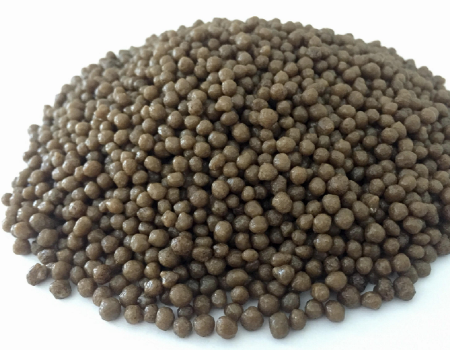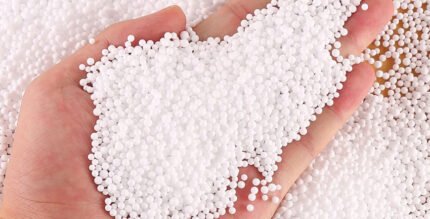DAP Diammonium Phosphate
Diammonium hydrogen phosphate is widely used in agriculture. It is used as a nitrogen and phosphorus fertilizer to supply nitrogen and phosphorus nutrients required by crops, promote plant growth, improve yield and quality. In addition, diammonium hydrogen phosphate can also be used to control phosphorus deficiency in soil, and can improve soil texture and fertility.
Category: FERTILIZER
Description
Description
Diammonium hydrogen phosphate is widely used in agriculture. It is used as a nitrogen and phosphorus fertilizer to supply nitrogen and phosphorus nutrients required by crops, promote plant growth, improve yield and quality. In addition, diammonium hydrogen phosphate can also be used to control phosphorus deficiency in soil, and can improve soil texture and fertility.
| Diammonium Phosphate(DAP) application: |
| Phosphorus fertilizer is generally used as the base fertilizer. Under the same conditions, the higher the soil available phosphorus content, the lower the fertilizer efficiency. The suitable dosage range of phosphorus fertilizer for several main crops on the general phosphorus deficiency soil is: Phosphorus fertilizer (P2O5) (4-6) kg for grain crops, sweet potato, potato and cotton, peanut, rape, soybean, jute, tea tree (3-5) kg, watermelon (2-4) kg, tobacco (1-3) kg, sugarcane (6-8) kg, and fruit trees (0.2 to 0.3) kg per plant. When it is found that crops show the symptoms of phosphorus deficiency, phosphorus fertilizer is sprayed on the leaf surface to make phosphorus enter the object through the stomata or cuticle on the leaf surface. Rice, wheat and other gramineous crops can be used at 2% to 3% concentration, rape, vegetables can be used at 1% concentration. It can also use 0.25% concentration of potassium dihydrogen phosphate to spray after the dew dries in the morning or before the dew in the evening, which has a significant increase in production. |
| item | value |
| Classification | Phosphate Fertilizer |
| Type | Diammonium phosphate |
| CAS No. | 7783-28-0 |
| Other Names | Diamoni Photphat ( DAP ) |
| MF | (NH4)2HPO4 |
| EINECS No. | 231-987-8 |
| Place of Origin | China |
| Release Type | Quick |
| State | GRANULAR |
| Purity | 99% |
| Application | Agriculture |
| Brand Name | Nongsheng |
| Model Number | 64% DAP Fertilizer |
| Color | Brown/Yellow |
| Product Name | Diammounion Phosphate Fertilizer |
| Grade | Fertilizer Grade |
| Packing | Packed in 1 ton jumbo bags 25kg/50kg/bag; in Bulk |
| Moisture | 3% Max |
| P2O5 | 46% min |
| MOQ | 25 Ton |
| Usage | High-efficiency Compound Fertilizer |
| Nitrogen | 18% Min |
| Appearance | Brown/Yellow Granules |
Reviews (0)
Be the first to review “DAP Diammonium Phosphate” Cancel reply
Shipping & Delivery


Related products
Ammonium Sulfate
Automotive Urea
Automotive urea has the advantages of low toxicity, low corrosiveness, and non flammability, and is mainly used for exhaust purification of heavy-duty diesel engines, such as large trucks and buses. On diesel vehicles, urea is typically used in conjunction with exhaust aftertreatment systems such as particulate filters (DPF) to ensure the proper functioning of the emission system and compliance with environmental standards.
Mapmonoammonium Phosphate
Monopotassium Phosphate
NITROGEN FERTILIZER
NPK
Product name:Zinc Sulphate Monohydrate feed grade/fertilizer grade
Chemical formula:ZnSO4·H2O
CAS:7446-19-7
Product performance:
Zinc is the forming element of many enzymes and hormone, and participates in
metabolism of protein, carbohydrate as well as lipid. When lack of zinc, animals
exhibit inappetence, slow growth, thick and disorderly clothing hair, depilation, dry
and chappy skin and unease-cure wound. Adding high dosage zinc in initial feed for
sucking can reduce diarrhea and increase weight.
UREA
Urea is a neutral quick-acting fertilizer with a chemical formula of CO(NH2)2 and a nitrogen content of up to 46%. Urea is a white crystal that is tasteless and odorless, easily soluble in water, ethanol and benzene, and slightly soluble in ether and chloroform. The nitrogen content of urea is the highest among solid nitrogen fertilizers, which makes it a highly efficient nitrogen fertilizer. After application, no harmful substances will remain in the soil, and it has little destructive effect on the soil, so it is widely used. The application methods of urea include as a base fertilizer or topdressing. Urea is decomposed into ammonium carbonate by microbial action in the soil, and ammonium carbonate is easily absorbed by plants, so urea has a rapid fertilizer effect. However, the utilization rate of urea is low, about only 20%-30%, and most of the urea applied to the soil will be lost or volatilized with water. In order to improve the utilization rate of urea, it can be carried out by deep application in advance or foliar spraying. The method of foliar spraying of urea is simple and effective, which can make urea quickly enter the leaves and participate in various metabolic processes of crops, significantly improving the utilization rate of urea.
Zinc Sulfate Heptahydrate
Product name:Zinc Sulphate Monohydrate feed grade/fertilizer grade
Chemical formula:ZnSO4·H2O
CAS:7446-19-7
Product performance:
Zinc is the forming element of many enzymes and hormone, and participates in
metabolism of protein, carbohydrate as well as lipid. When lack of zinc, animals
exhibit inappetence, slow growth, thick and disorderly clothing hair, depilation, dry
and chappy skin and unease-cure wound. Adding high dosage zinc in initial feed for
sucking can reduce diarrhea and increase weight.






















Reviews
There are no reviews yet.